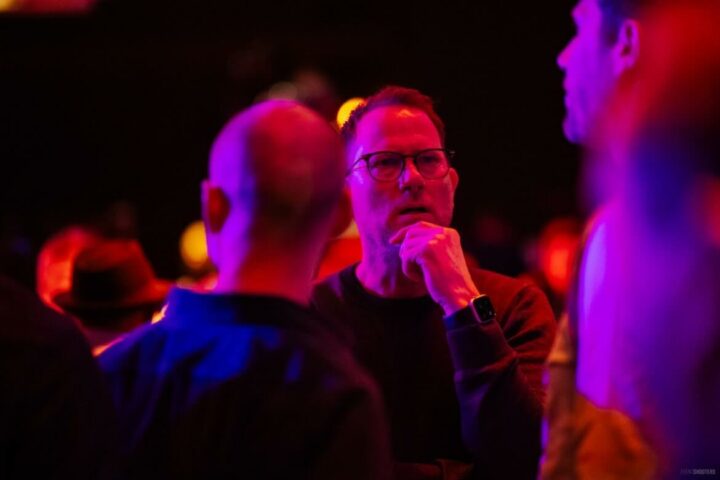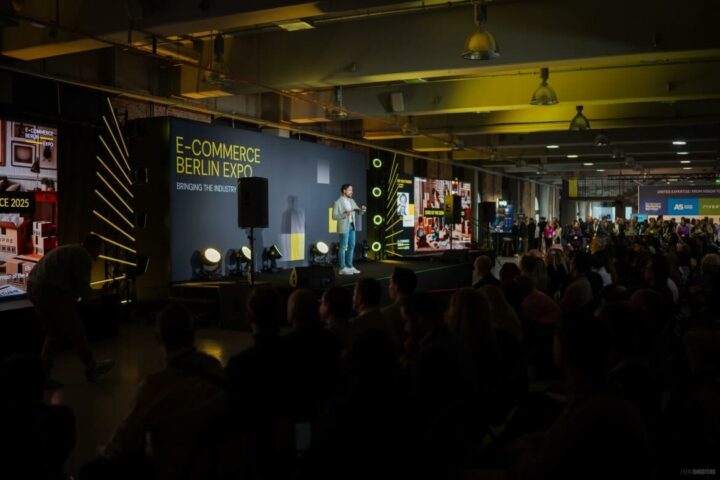The European E-commerce market: one wallet size does
not fit all
Written by
Editorial TeamPublished on

The European eCommerce market is strongly fragmented: those who understand the local differences can offer payment solutions for all of Europe. What is the right strategy to tackle the complex European eCommerce market? Where is the right balance between localization and a global ecosystem, and what other factors must be taken into account to be successful in the extremely diverse and complex markets? These questions were discussed in the Nexi Fireside Chat.
On February 23, 2023, an engaging and dynamic fireside chat took place between moderator Jay Olschewitsch from Nexi Group, Charlotte Paauwe from Ratepay, and business and e-commerce expert, Michael Atug, at this year’s E-commerce Berlin Expo.
Jay Olschewitsch is an eCommerce and payment expert at Nexi. He works in the sales area and advises small and medium-sized companies on how to optimize their payment solutions. Charlotte Paauwe is an expert with anything that has to do with payments, leading the Partner Management team at Ratepay, and responsible for new and existing partnerships.
Michael Atug is a founder, online retailer, advisor, speaker, influencer and digital rockstar.
This year, the conference attracted over 10,000 visitors and more than 250 exhibitors. The event created opportunities and inspiration for the entire e-commerce ecosystem, from merchants to platforms, hosting providers, logistics providers to payment processors and online solutions. Opportunities and horizons could be expanded and developed. Every year, leading industry experts hold lectures or panel discussions on several stages to share their expertise. This year, 75 speakers from all over the world were represented. Participants could be inspired by current e-commerce trends, use cases or forecasts.
The theme of Nexi’s fireside chat was “Get the difference! Understanding different European markets,” and those in attendance were privy to a lively discussion about the noteworthy e-commerce market differences across different European markets. The main takeaway? When it comes to digital payment services, one wallet size does not fit all.
Cultural and geopolitical differences
Why can’t Germany and the Netherlands offer the same digital options? Well, according to Paauwe, who hails from the Netherlands, there are cultural implications to take into account. As it turns out, in general, an open invoicing system (Rechnungskauf) has always been a preferred payment method in Germany. Rechnungskauf allows customers to make purchases on invoice, and pay for items and services after receiving them.
On the other hand, in the Netherlands, for example, this invoicing system is not at all a thing. What gives the Germans a secure feeling and an idea of control is simply inconvenient for a person from the Netherlands. The Dutch use more credit cards, compared to the Germans, or prefer using the popular online payment system iDEAL, to make secure and convenient bank transfers.
In East Europe, they use different methods as well. For example, in the Czech Republic they use Zip and Twisto, popular payment methods used for online and instore purchases. Beside payment traditions based on cultural differences, there are different brands that have a history and built trust in one country and that are absolutely unknown in other countries.
Generational differences
The use of Buy Now, Pay Later (BNPL) is on the rise among younger generations, especially during the coronavirus crisis. BNPL provides an opportunity to buy something even if the cash is not available, by allowing the buyer to pay in 14 days or in installments.
Driven by their demand for simplicity and convenience, younger generations are demanding a range of new payment options, most notably in online retailing, as well as e-commerce behaviors, including shopping, money transfers, and daily banking paying activities. For younger people, BNPL is yet another convenient solution, allowing them to purchase what they need now and pay for it later. Despite this rise, payment behavior is still very dependent on local behavior.
The right strategy
In countries like Sweden, it’s already been a while that people have been paying for even small purchases like a coffee with their credit cards (for more than 20 years). However, this trend has been present for many years and changing it may not be easy. While it may seem that it may be better if all of Europe would have a standardized system for payments—making everything easier and more consistent, this may take 5 to 10 years to happen. Despite the difficulties in changing the current payment system, it is important to strive towards a more streamlined and uniform process for the benefit of everyone, so right now it’s important as ever to take local payment behavior into consideration. Payment behaviors very much depend on the region, and local behaviors. At the same time the evolution of payments will continue to push businesses to upgrade their system, and move into a direction that is quick, easy, and seamless.
Balancing localization and global systems
According to Charlotte Paauwe, the best Payment Service Providers (PSPs) have the ability to connect with a wide range of payment methods in every country, allowing merchants to choose the best option for their business. These PSPs, who are on top of payment behavior in each country, have a significant advantage over others who believe in a one-size-fits-all approach. There has been a shift towards more agile PSPs like Stripe, who are always on top of things and don’t limit themselves to just offering credit cards and direct debits. By offering a variety of payment options, merchants are able to provide their customers with the most convenient payment method.
As Michael Atug stated, if a merchant is only selling in Germany, for example, and experiencing success, it’s okay. However, Germany is just one market in Europe, and in the world. Yet if they want to expand to other markets in order to make more money, it’s important to be able to sell in multiple markets in order to grow the business. In order to sell in multiple markets, it’s important to understand local payment behavior. To quote him: “It’s not about the bling bling!” Great shopping experiences have easy and convenient payment options. So bling bling is of no interest when it comes to a consumer’s buying decisions. What counts is a lean process that makes everything as easy as possible.
How does this affect the e-commerce basket?
For many retailers selling online, the abandoned cart—when a customer does not go through with purchasing the items in their shopping cart, is a major challenge. Both Atug and Paauwe agreed that a merchant must take into consideration the payment methods they offer. The merchant should offer as many payment methods as possible, available in their country. That way, the customer has different payment solutions. Let it be from the most popular credit cards, Amazon pay, PayPal—it’s not easy to offer everything, but it’s best to have everything the customer wants, to make it as frictionless for them as possible to go through with their purchase. According to Michael Atug, merchants using solutions like Nets Easy facilitates the process. Net Easy’s an integration option to build conversion-optimized payment forms.
Charlotte Paauwe added that through research done by Ratepay, they found that there was a huge increase in checkout conversion rates if both a white label BNPL and a branded BNPL were offered. There was less cart abandonment. Paauwe explained that there was a link and a clear relationship between what was offered as payment methods and the number of customers who completed their purchases. You cannot decide what the customer wants. The customer wants to choose. So we are thrown back to an old truth that has nearly been forgotten: the customer is always right.
Fostering a future of flexibility
A 2022 article from Forbes, “The Future of Payments Is Diverse and Digital-First: Marketers Take Note Brands,” discusses the importance of offering personalized payment experiences to customers. Companies are increasingly embracing new payment technologies, such as mobile wallets, BNPL options, peer-to-peer apps, to offer personalized payment experiences to consumers. By offering payment choices that reflect consumers’ diverse and evolving lives, brands can create positive brand experiences and foster a future of flexibility and personalization. This aligns with the key insights highlighted in this fireside chat.
In Summary
As Michael Atug likes to say, “Payment is not sexy.” Cultural and geopolitical differences play a big role in the payment methods used in different European countries. To tackle the complex European eCommerce market, it is important to take local payment behavior into consideration. In addition, balancing localization and global systems is crucial to be successful in the diverse and complex European eCommerce market.
The European eCommerce market is strongly fragmented and those who understand the local differences are at an advantage. A successful strategy must take into account local payment behavior, balancing localization and global systems and the use of agile PSPs who can connect with a wide range of payment methods in every country.
It was a pleasure for Nexi to host the fireside chat, “Get the difference! Understanding different European markets.” Nexi wants to shape the way people pay and businesses accept payments, by offering their customers the most innovative and reliable solutions, thanks to their scale and the competence and energy of their people. Their vision is to drive the transition to a cashless Europe by making every payment digital, because it is simpler, faster and safer for everyone. Keeping the dialogue open and creating important opportunities for conversation on the topic is important to them, and they were proud to participate in this year’s 2023 E-commerce expo in Berlin. They will be back next year! And remember… Even if payment might not be sexy, it is crucial for companies. Payments keep businesses going.


